Input text, and Tomoviee 2.0 instantly transforms your imagination into dynamic visuals, generating precise 5-second videos. Choose freely between Standard Mode and HD Mode: Standard Mode balances quality and speed for daily creative needs, while HD Mode delivers cinematic-grade clarity. Supported aspect ratios include vertical (9:16), horizontal (16:9), square (1:1), and professional ratios (3:4, 4:3)—seamlessly adapting to short videos, film promotions, e-commerce ads, and more.
Tomoviee 2.0 deeply integrates real-world physics (e.g., dynamic lighting, gravity effects) and cinematic camera logic (dolly/pan/tilt/orbital shots), ensuring every frame flows smoothly with narrative impact.
Mastering Tomoviee AI Prompts
Prompt is the core language for communicating with Tomoviee, directly defining the quality of generated videos. Mastering effective prompts is essential for every user. As a next-gen text-to-video model, Tomoviee 2.0 evolves continuously—unlocking its full potential requires users to deeply explore physics and camera techniques. To empower creators, we introduce the structured Tomoviee Prompt Formula:
Prompt = Subject (Details) + Motion + Scene (Details) + [Lens Language + Lighting + Atmosphere]● Subject: The central object in the video (person/animal/object), e.g., "a dancer in a red dress," "an orange cat," "a floating glowing cube."
● Subject Details: Describe appearance/posture concisely (movement, hairstyle, clothing, pose).
● Motion: Define subject movement (keep simple for 5s clips), e.g., "slow-motion spin."
● Scene: The subject's environment (foreground/midground/background).
● Scene Details: Brief environmental descriptions, e.g., "cyberpunk cityscape," "sunny beach."
● Lens Language: Camera techniques conveying story/emotion, e.g., "slow dolly-in + shallow depth of field" (distinct from camera motion control).
● Lighting: Soul of visual storytelling, e.g., "sunset glow," "volumetric rays," "neon ambiance."
● Atmosphere: Overall mood, e.g., "lively festival," "cinematic cool tones," "tech-apocalypse style."
|
The core elements—Subject, Motion, and Scene—form the foundational unit for describing video. To add detail, list multiple short descriptors while preserving key elements. Tomoviee AI will expand prompts to generate expected results.
Note: Currently, only 9 languages are available for text-to-video prompts, namely English, Chinese, German, Japanese, Spanish, French, Italian, Korean, and Portuguese.
Example Evolution:
- Basic: "A Shiba Inu running through a flower field."
- Enhanced: "An orange Shiba Inu bounds joyfully through a sunflower field. Sunlight highlights its fluffy fur, a red polka-dot scarf fluttering at its neck. Golden sunflowers sway under distant blue mountains and clouds."
- Pro: "Low-angle shot + shallow depth of field + backlighting. An orange Shiba Inu runs through endless sunflowers, fur glowing gold, red scarf streaming in wind. Petal close-ups intercut with its motion. A Dutch windmill emerges in the background. Cinematic color grading."
Result: Significantly elevated visual quality—often exceeding expectations.
New users can start quickly with built-in templates, while advanced creators combine complex scenes to master Tomoviee 2.0 and lead the AI video revolution.
|
Basic |
Enhanced |
Pro |
|
A Shiba Inu running through a flower field. |
An orange Shiba Inu bounds joyfully through a sunflower field. Sunlight highlights its fluffy fur, a red polka-dot scarf fluttering at its neck. Golden sunflowers sway under distant blue mountains and clouds. |
Low-angle shot + shallow depth of field + backlighting. An orange Shiba Inu runs through endless sunflowers, fur glowing gold, red scarf streaming in wind. Petal close-ups intercut with its motion. A Dutch windmill emerges in the background. Cinematic color grading. |
Helpful Tips:
-
Use simple words and sentence structures; avoid overly complex language.
-
Ensure motion follows real-world physics—describe movements that could plausibly occur in the scene.
-
Significant deviations between descriptions may trigger abrupt camera cuts.
Text-to-Video Physics
Every Tomoviee 2.0 creator gains an intelligent physics engine. Simply describe your scene—whether it's "rain cascading from a roof," "silk dancing in the wind," or "slow-motion coffee splatter"—and the system automatically applies real-world physics:
- Gravity sends water droplets flying in parabolic arcs.
- Fluid dynamics shape smoke into spiraling plumes.
- Rigid-body collisions calculate glass shattering with radial precision.
- Soft-body simulations trace fabric draping and falling trajectories.
- Optical principles generate sunbeams piercing through morning mist.
This eradicates the "plastic feel" of AI-generated videos. Explosions dissipate authentically, water splashes ripple with impact, and motion inertia flows with cinematic realism. Now, whether crafting product VFX ads, martial arts slow-motion sequences, or scientific visualizations—focus purely on creativity. Tomoviee safeguards the laws of physics.
| Promot |
A white plush bear floating in clear water, rippling gently. |
Waves lapping against the shore under a pink moon, dreamlike atmosphere in moody dark tones. |
|
Video |
Camera Movement for Text-to-Video
Tomoviee 2.0 offers 29 professional-grade camera movements across two categories: 16 foundational techniques and 13 advanced maneuvers! With simple selections, you gain instant access to a full spectrum of cinematic tools—from basic pans and tilts to dramatic dolly zooms. Whether crafting intimate character close-ups, sweeping environmental reveals, dynamic orbiting shots of mecha combat, or high-speed chase sequences, the system executes every move with precision.
We meticulously simulate real-world cinematography physics: the subtle focus breathing during lens adjustments, authentic handheld jitter, and motion blur in high-speed tracking shots—each frame infused with cinematic immersion. Smarter still, our AI dynamically adapts to scene emotions: intensifying camera shake for action sequences while switching to fluid, stabilized movements for emotional moments. This transforms professional camera language into your creative superpower. Now, anyone can achieve director-quality videos instantly—no expertise needed!
|
Camera Movement |
Shot Type |
Frame Dynamics |
|
Basic-Camera Movement |
Pan Left |
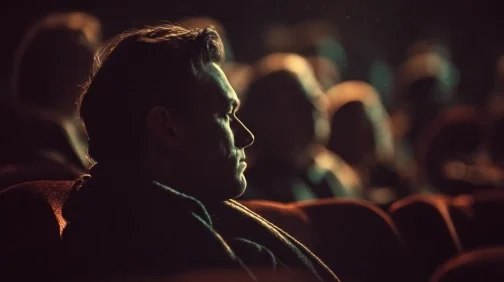 |
|
Pan Right |
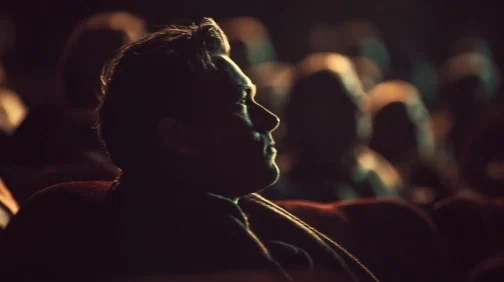 |
|
|
Pan Up |
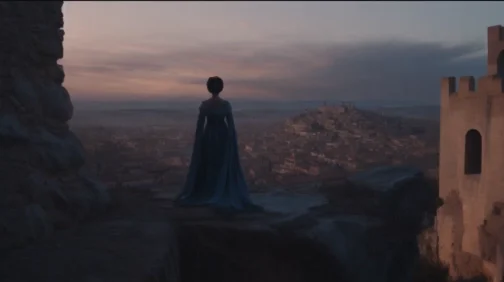 |
|
|
Pan Down |
 |
|
|
Dolly In |
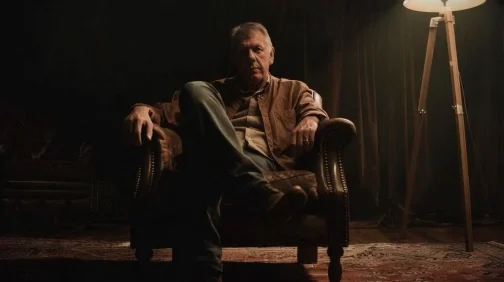 |
|
|
Dolly Out |
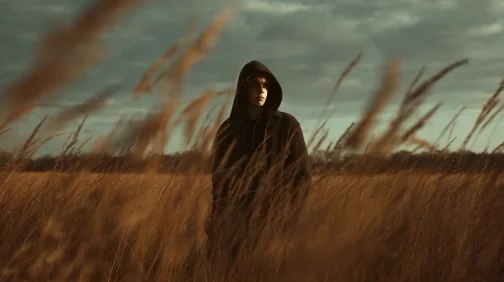 |
|
|
Zoom In(Focus) |
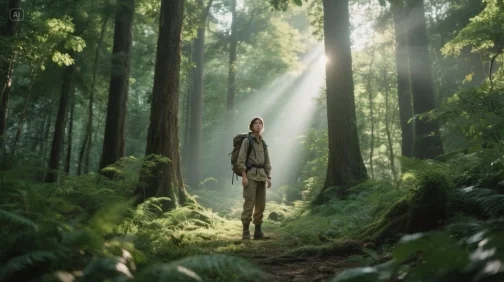 |
|
|
Zoom Out(Focus) |
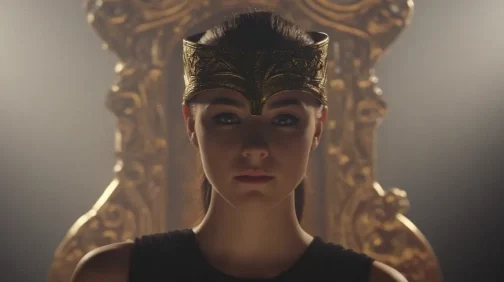 |
|
|
Basic-Camera Movement |
Wrap Around |
 |
|
Rotate |
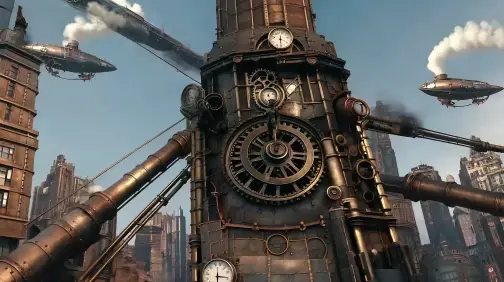 |
|
|
Basic-Handheld and Tracking |
Handheld Shot |
 |
|
Tracking Shot |
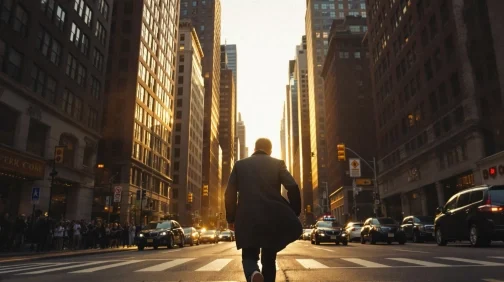 |
|
|
Basic-Image Composition |
Wide Shot |
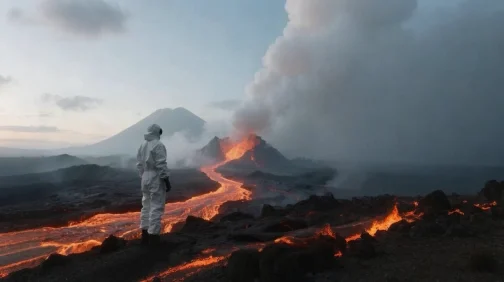 |
|
Panorama |
 |
|
|
Close Shot |
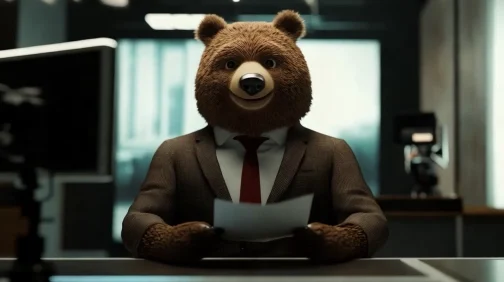 |
|
|
Close-up |
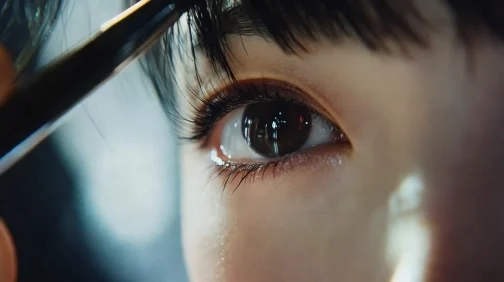 |
|
|
Static Shot |
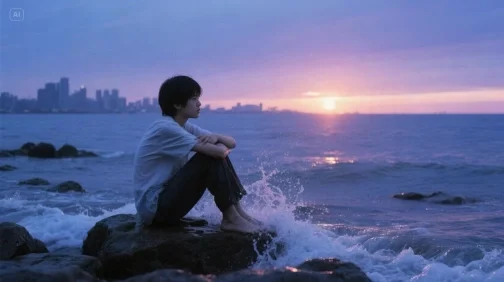 |
|
|
Eye-level Shot |
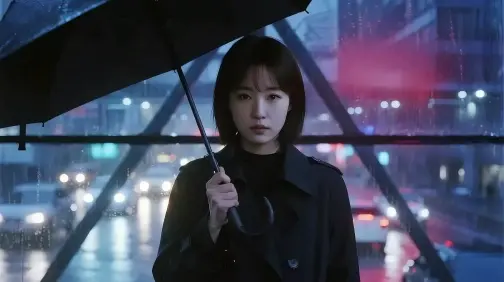 |
|
|
Rule of Thirds |
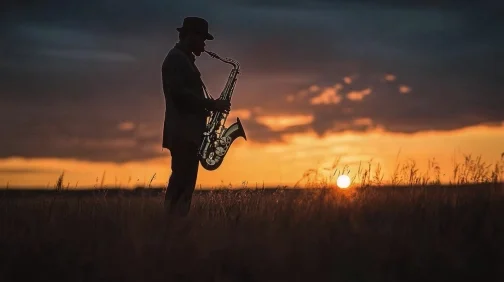 |
|
|
Symmetrical |
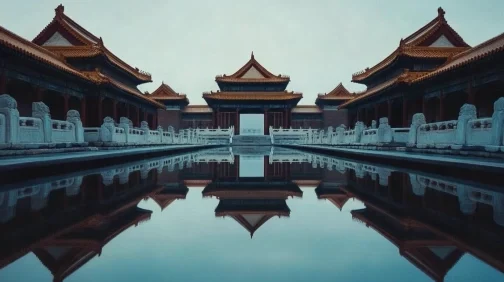 |
|
|
Diagonal |
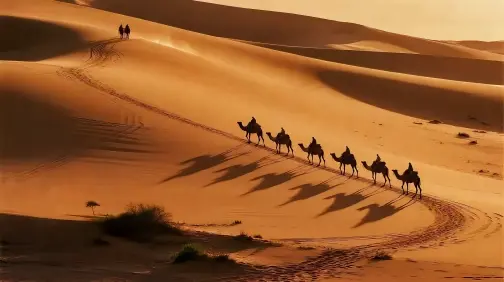 |
|
|
Low-angle Lens |
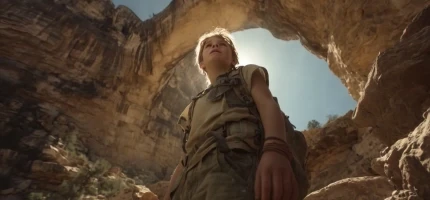 |
|
|
Advanced Camera Movement |
Jib Down |
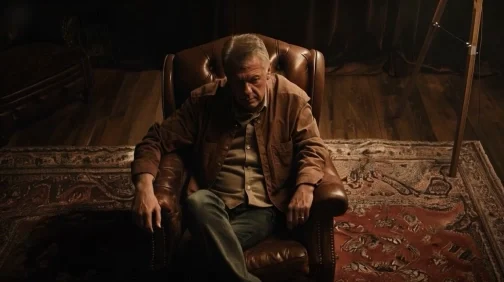 |
|
Crane Up |
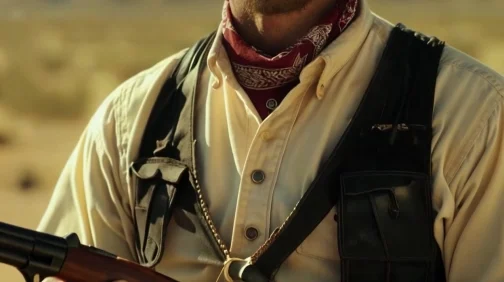 |
|
|
Crane Down |
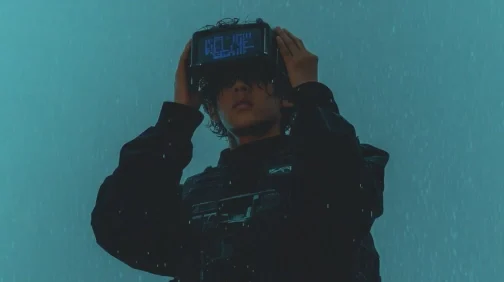 |
|
|
Bird's-eye View |
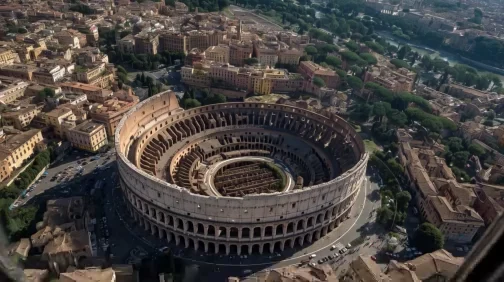 |
|
|
Macro Lens |
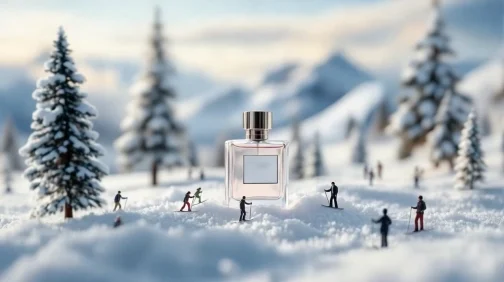 |
|
|
First-person View |
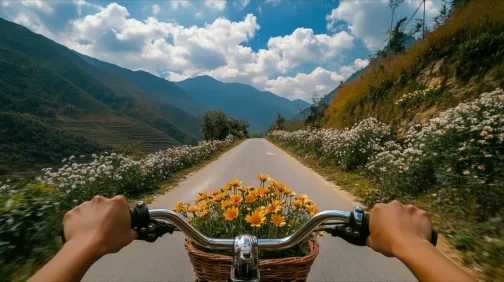 |
|
|
Over-the-shoulder |
 |
|
|
Aerial View |
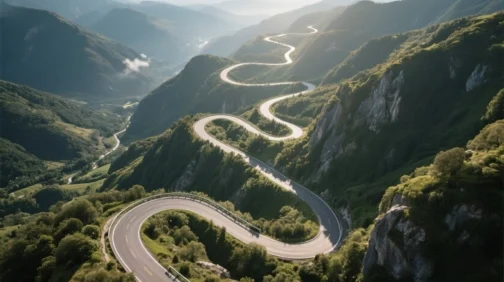 |
|
|
Time Lapse |
 |
|
Promot |
Close-up shot of a small bee resting on a flower. |
Wide shot: A boy wearing headphones leans back on his bed listening to music in a tidy, warm room. Transition to dolly in on his face—eyes closed, serene expression. |
|
Video |
Step-by-Step Guide
- Enter Creation Page
- Access [Video Generation] from the left toolbar on Tomoviee Creation Square
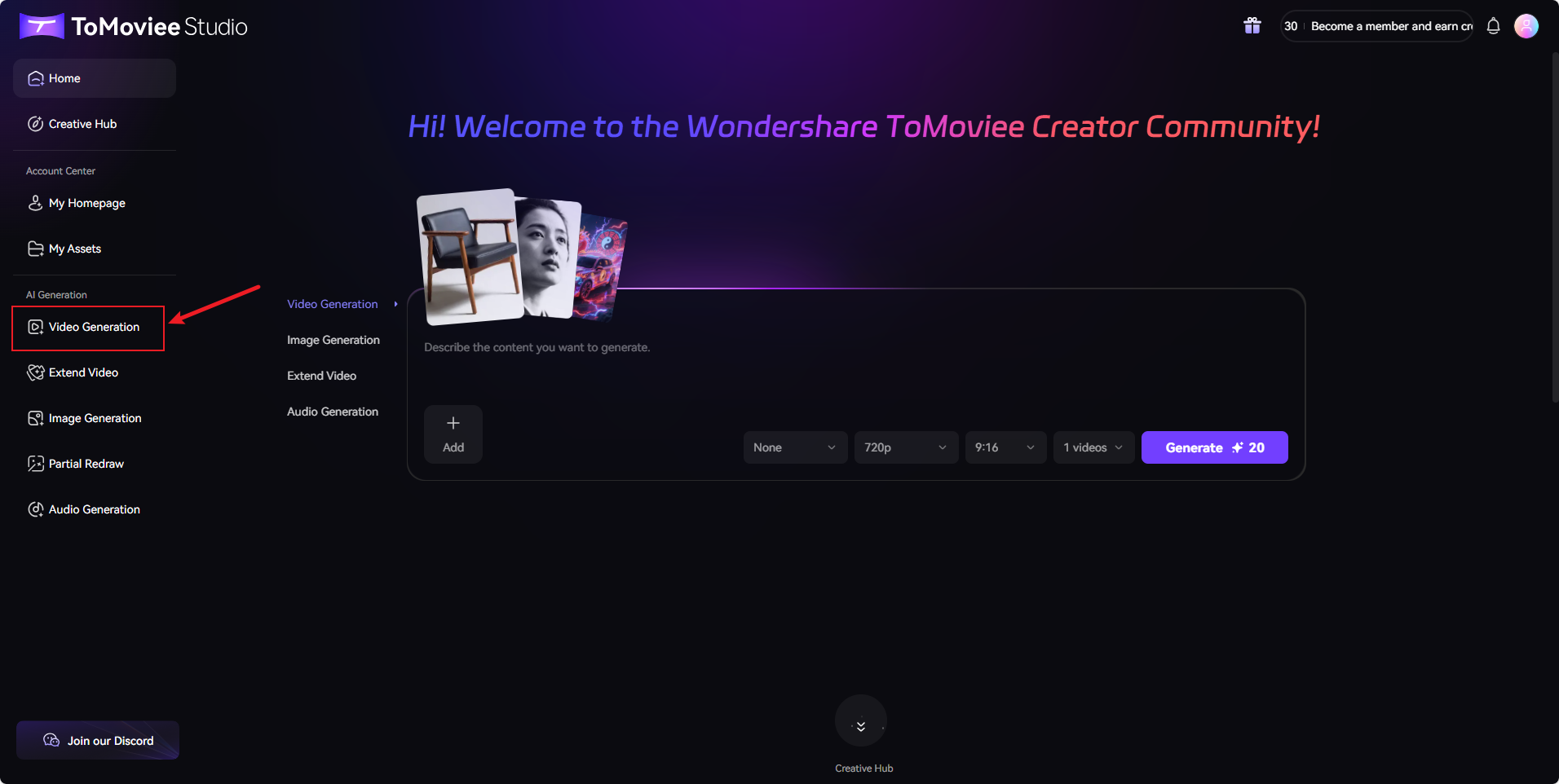
- Select the [Text to Video] function entry
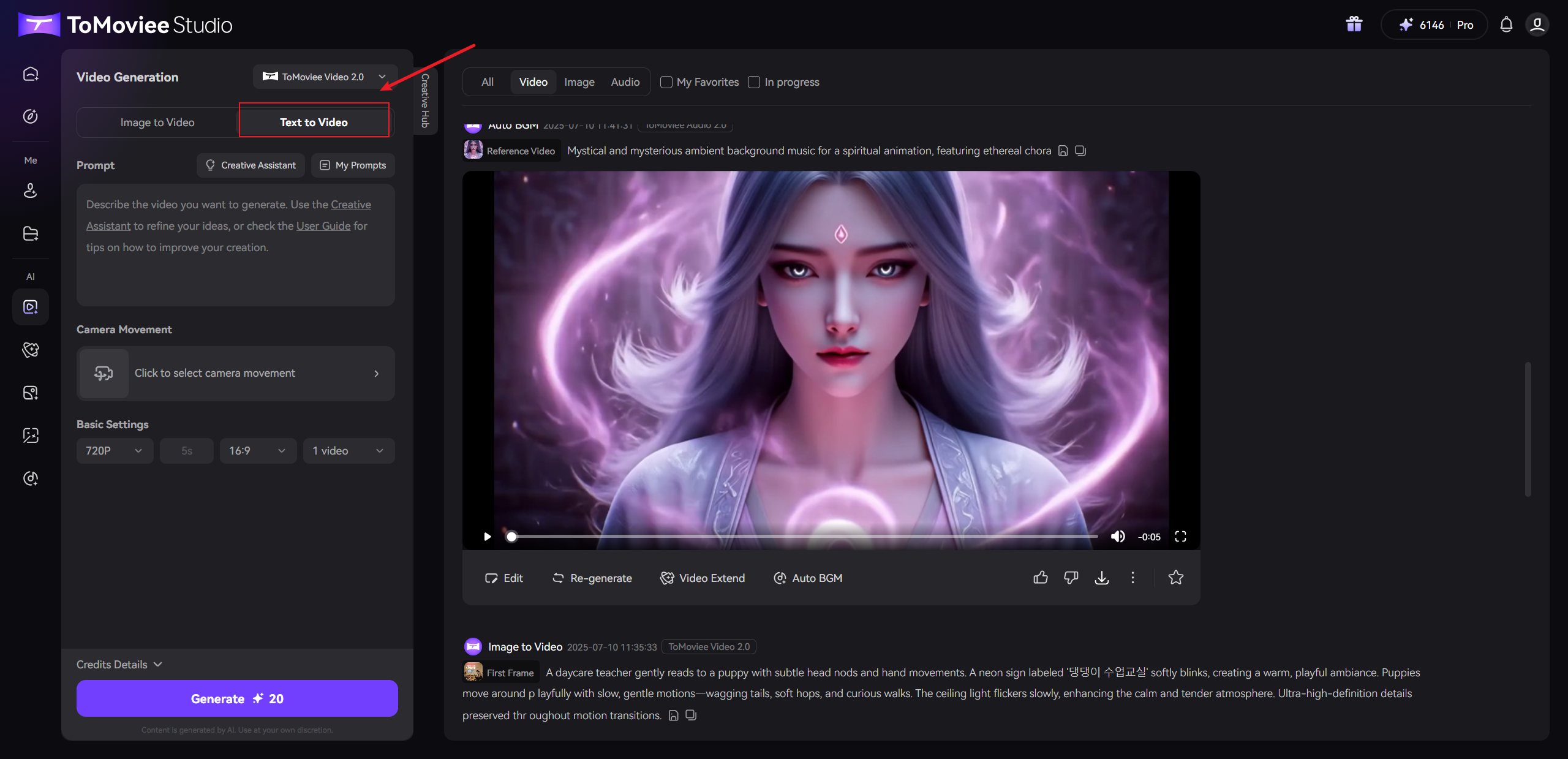
- Access [Video Generation] from the left toolbar on Tomoviee Creation Square
- Input Prompts
- Type your desired content in the Prompt Box (e.g., "A Chinese girl in an emerald dress sits centered on a giant floating translucent lotus leaf, pale green hue.")
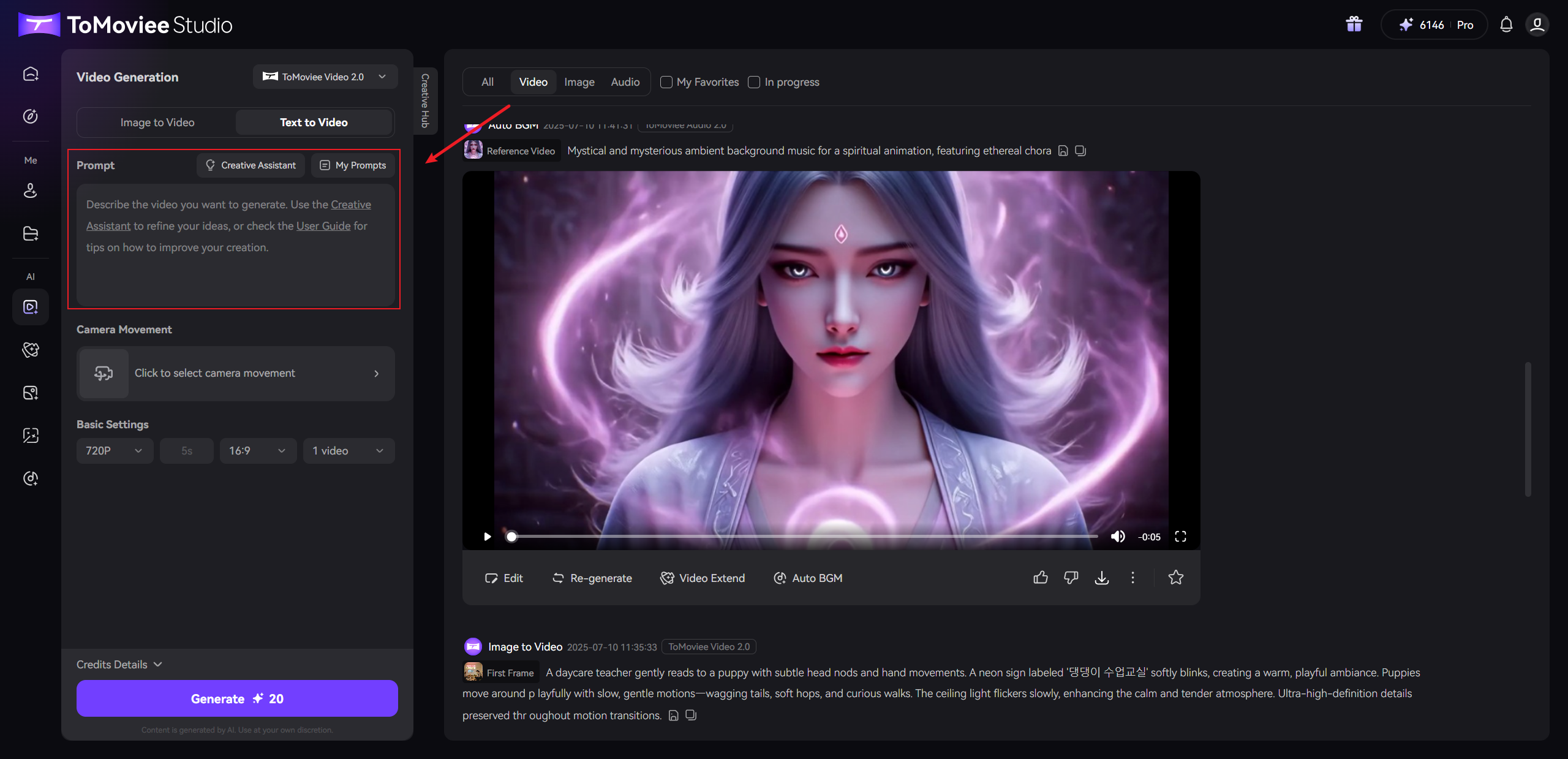
- Assistant Tools:
- [Creative Assistant]: Let AI refine your prompts and spark creativity. Click [Use Prompt] to apply enhanced suggestions.
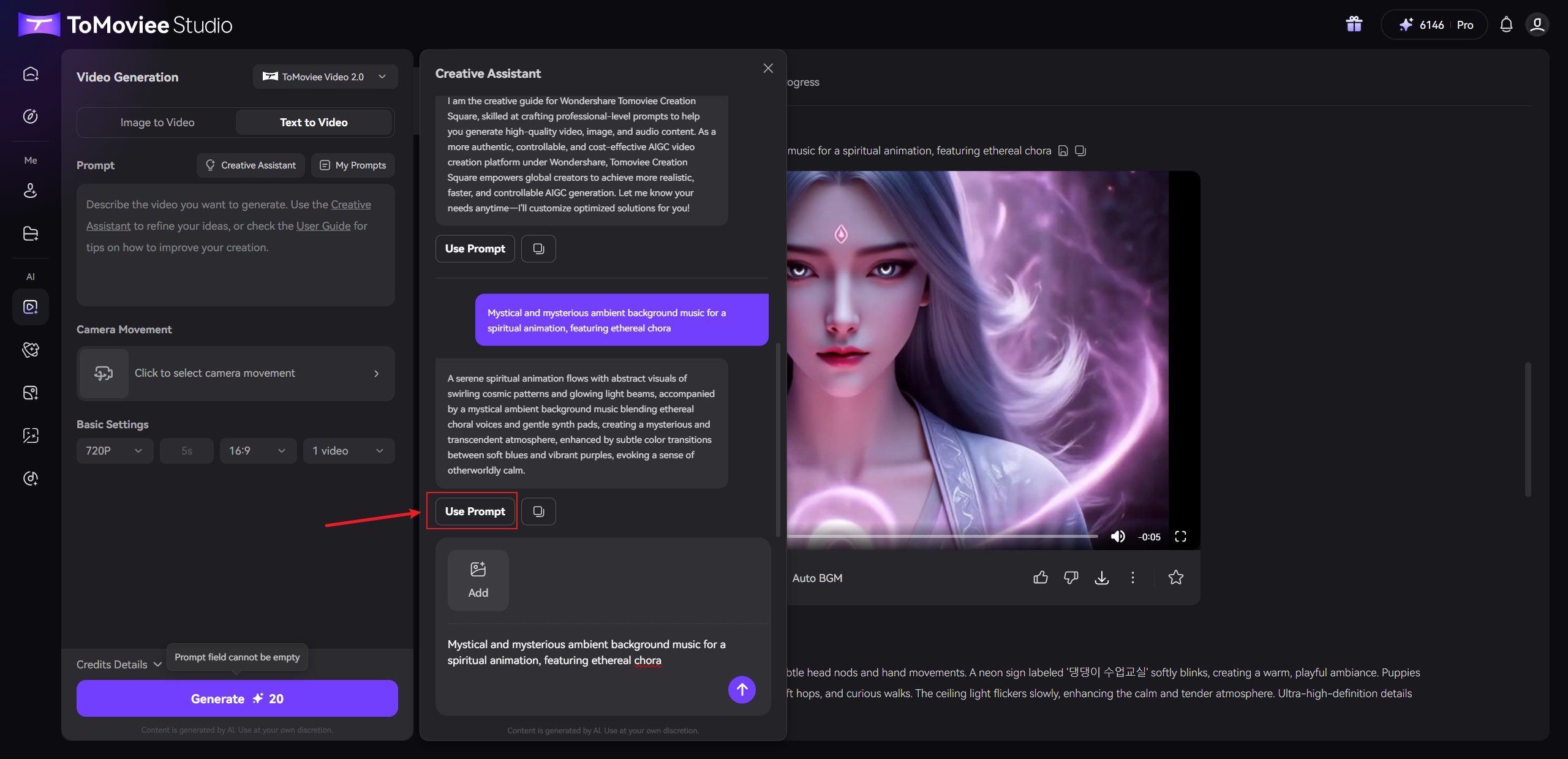
- [My Prompts]: Reuse historical templates or create presets.
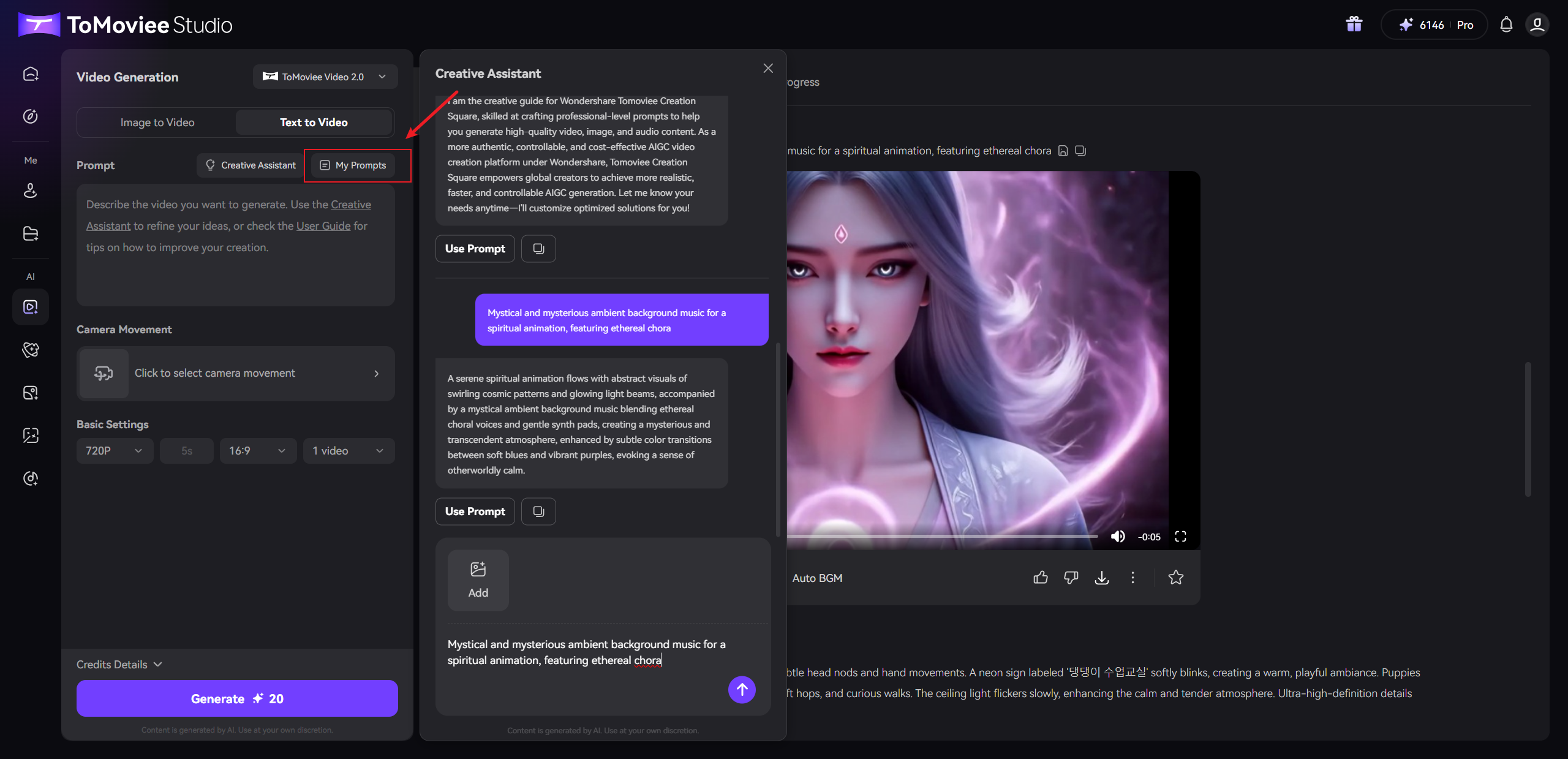
- [Creative Assistant]: Let AI refine your prompts and spark creativity. Click [Use Prompt] to apply enhanced suggestions.
- Type your desired content in the Prompt Box (e.g., "A Chinese girl in an emerald dress sits centered on a giant floating translucent lotus leaf, pale green hue.")
- Configure Parameters
- Camera Movement: Select desired motion effects
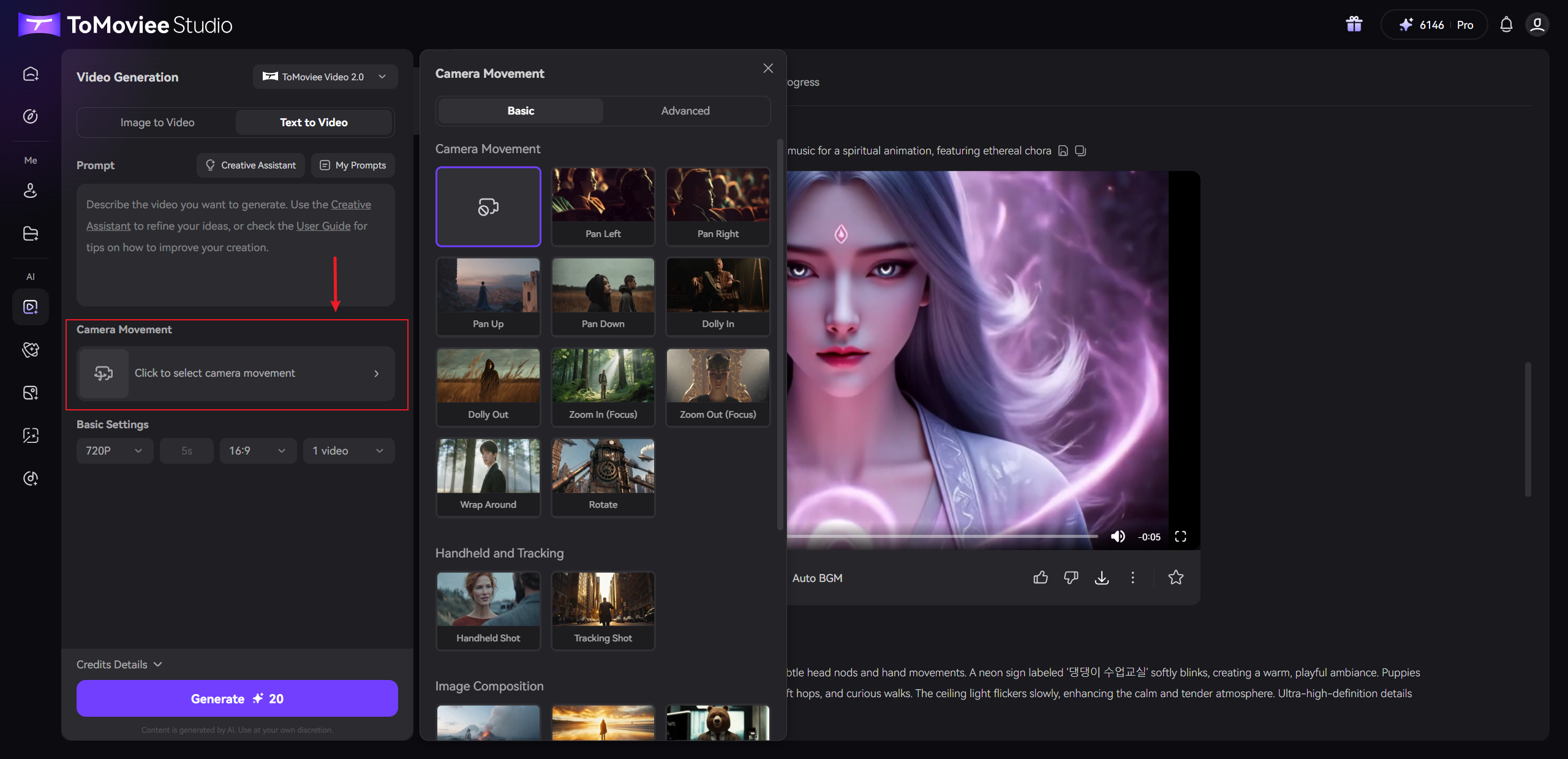
- Basic Settings Zone:
- Mode: Standard (720P) / HD (1080P)
- Duration: Fixed 5 seconds
- Aspect Ratio: 5 professional options (9:16 / 16:9 / 4:3 / 3:4 / 1:1)
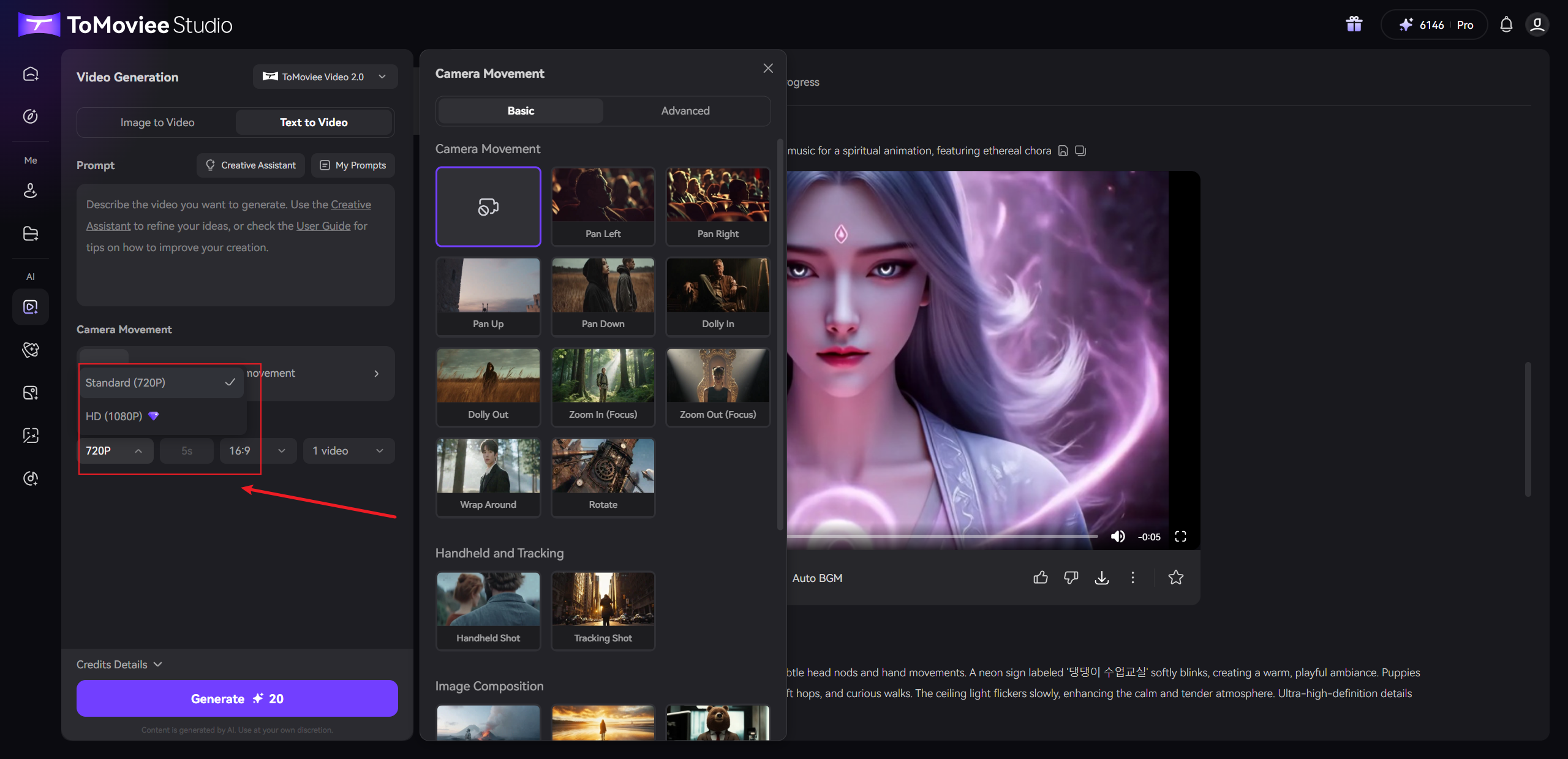
- Camera Movement: Select desired motion effects
- Generate Video
- Review credit consumption details
- Click [Generate] and wait for your masterpiece!
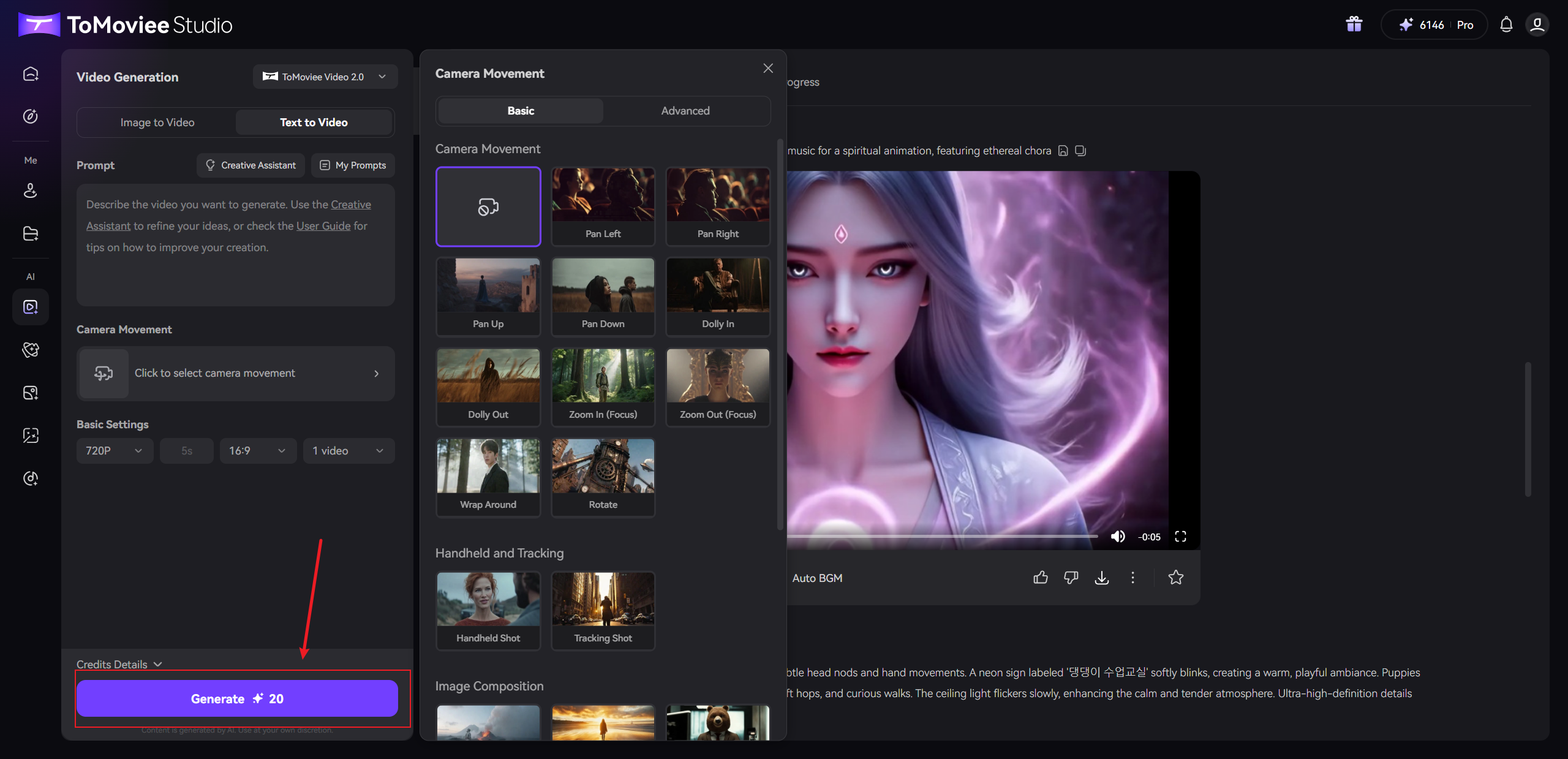
For more immersive experience, download ToMoviee IOS App, or ToMoviee Google Play